Kathy Ide's Blog, page 28
August 25, 2014
Danger: Over-editing
 Gail Gaymer Martin, my friend and fellow author, talks about the dangers of over-editing.
Gail Gaymer Martin, my friend and fellow author, talks about the dangers of over-editing.
One of the plights of a novelist or writer is wanting to perfect your work so completely that you can‘t move forward. I’ve known numerous authors who’ve never completed a novel because they continue to rework the first three chapters until they literally take the life from it.
There can be too much of a good thing. Editing is necessary to create a story that moves forward with every page and every paragraph, but over-editing can be a killer, like over-eating or over-dieting. Weight control is a balance of healthy food and realistic portions. Editing is the same.
The author must balance adding more flourishes to create a rich scene that is often skimmed by the reader or pages of dialogue that becomes too much chitchat, or the opposite, cutting so much out of the novel that it becomes bare bones and loses reality, emotion, and depth. So what can you do? This is the question I was asked by a reader who follows my Writing Fiction blog.
The question:
Sometimes I feel so overwhelmed! I’ve written my beginning over and over again. I have even gotten to 15,000 words but keep getting frustrated. How do you move on without going back and constantly editing? I am a perfectionist, but that seems to be hindering me in my writing. Any tips?
My response:
Over-editing can hinder a writer’s progress and allow someone with talent to never finish a book. It’s a kind of discipline that you have to learn. A novelist’s voice is important. Readers know the tone and rhythm of your writing, and they connect with it. When you strip it to the bones or pile on unnecessary fat, you’ve changed your style and voice and can disconnect with readers.
Editing is to make the book the best it can be, but, sometimes you will reach a point where you lose judgment and do more damage than good to a novel. When you spend all your time tweaking the novel, you are not moving forward. You’ve become stagnant, and when standing still, you get nowhere.
Remember that all books need an editor, traditional or self-published. Think of your work as a first draft and know that if the book is to be published, an editor will help you polish your work with fresh eyes. Self-publishing means hiring an editor to work with your book, and traditional publishing means numerous editors—your senior, copy, and line editors—will go over your book with you at no cost.
Over-editing not only takes the life from the book, but it also steals energy and creativity from the novelist. The book becomes boring and loses its spark. Don’t let that happen. Learn ways to help you move forward.
Techniques to help you avoid over-editing
Set a Deadline:
Traditional writers sell a novel and then are given a deadline which is part of the contract so authors make sure they meet their deadline. Even if the book isn’t sold, make a decision when you want the book to be written or when you want the proposal to be ready for the submission to a publisher. Deadlines help you move along. Assign yourself so many words a day. If you spend the time editing, you will have to continue to add words. Give yourself a penalty if you don’t meet the deadline. No chocolate the next day. No TV in the evening. When you lose something you enjoy for not making the deadline, you will think twice about over-editing.
Read Work Aloud:
Aloud is the key. Listen to your novel either by reading aloud or by using a text to voice program. I use Natural Reader and find it very helpful in not only catching typos or the wrong word (meet instead of met, slide instead of slid) but also spotting overworked words, awkward sentences and redundancies. I highlight the area I want to look at when I finish listening or make note of the page and then look at only those sections later.
Use a Critique Group:
While the group is only as good as its members, hearing other’s opinions of your novel can help you discover areas what needs clarifying, cutting or reworking in some way. What’s clear in your mind can be confusing in someone else’s. Ask them to view the action and dialogue with your character’s personality, values and beliefs in mind. Is it realistic and consistent. People change but only in time. Input on your work is important, but not from mothers, siblings or good friends. They aren’t always honest so as not to hurt your feelings. . .or their opinion is skewed because they love you. Critique groups are best when they are fellow authors. When those readers don’t find an error or problem in some of the scenes, don’t change them.
Make a List of Common Problems:
When you’re working on a list of specific problems, you will not get stuck in a rut. As you discover areas of weakness, focus on those and once changed, let it be. Too much backstory, lack of description, overuse of dialogue tags, not enough white space on the page, or redundancy. For example, keep a list of words you overuse. As you listen to the novel or skim the pages, notice words that jump out at you because you’ve used them over and over. Use a thesaurus and find alternatives for the same idea and use them. Cut as many adverbs as possible. Adverbs are a weak way to make your character come alive. Avoid adverbs in dialogues tags. Make the sentences come alive with the words you select rather than telling the reader if the character is excited, suspicious or angry and don’t use too many adjectives in your descriptions, but don’t cut them bare-bones.
Walk Away:
Give yourself a break from the novel. Put it aside for a few days and allow yourself to un-attach from the story. When you go back, you can look at it with new eyes. What looked bad might be fine. What seemed amazing might be so overworked making it lose its spark.
My Editing Method:
I write without editing until I’m done for the day. Wheb I return to the novel, I go back to what I’d written and reread, making a few changes or highlighting a section I’m not sure about or one that needs some research. Then I continue to write, adding more to the story. When I stop, I go back and fix the things I highlighted early that needs work, or I wait and edit the next day. But each day I only edit what I’d written the day before. Once I have five or six chapters written, I edit again, and then move forward with the novel. I always leave a note to myself where I will start when I finish writing for the day or if I’m taking a break. Writers must learn to turn their internal editor on and off as needed. Sadly, too many writers work so hard perfecting the first chapter they never get anywhere, and what they’ve written becomes overworked and loses it’s spark. Part of creativity is spontaneity.
What techniques do you use to avoid over-editing? Let us know in the comments below.
© Gail Gaymer Martin 2014
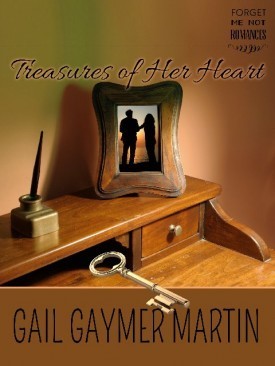 Multi-award-winning novelist, Gail Gaymer Martin is the author of contemporary romance, romantic suspense, and women’s fiction with 55 published novels and nearly 4 million books in print. Her novel’s have received many national awards, such as: the ACFW Carol Award, Booksellers Best and RT Reviewer’s Choice Award. CBS local news listed Gail as one of the four best writers in the Detroit area. She is a cofounder of American Christian Fiction Writers and serves on their Executive Board. Gail is a member of Advanced Speakers and Writers as well as Christian Authors Network and is a keynote speaker at women’s organization events as well as a workshop presenter at conferences across the US. Gail lives in Michigan with her husband.
Multi-award-winning novelist, Gail Gaymer Martin is the author of contemporary romance, romantic suspense, and women’s fiction with 55 published novels and nearly 4 million books in print. Her novel’s have received many national awards, such as: the ACFW Carol Award, Booksellers Best and RT Reviewer’s Choice Award. CBS local news listed Gail as one of the four best writers in the Detroit area. She is a cofounder of American Christian Fiction Writers and serves on their Executive Board. Gail is a member of Advanced Speakers and Writers as well as Christian Authors Network and is a keynote speaker at women’s organization events as well as a workshop presenter at conferences across the US. Gail lives in Michigan with her husband.
Visit her website at: www.gailgaymermartin.com where you can read about her latest release, Treasures of Her Heart, available as a trade and eBook.
August 18, 2014
Introduction to Social Media
Last week’s post gave highlights from the social media workshop at The Christian PEN’s editor convention. If you happen to be new to social media, here is a beginner’s introduction to the most popular social media networks.
LinkedIn has more than 300 million users. Eighty-four million users are in the US, and there are three million business pages.
LinkedIn is considered a network of professionals. Some consider it very under-used as a social media outlet.
LinkedIn can:
build your reputation
demonstrate your expertise
keep you current in your industry
To find jobs:
Click on “Jobs” on the drop-down menu on the home page of LinkedIn.
Highlight “Find Jobs” and type in a keyword.
Don’t limit yourself by inserting a ZIP code.
Click the “Apply” button, then add your cover letter.
To create a LinkedIn profile:
Choose good keywords in your profile.
Keep your profile up to date with experience, skills, training, education.
Only accept a connection from someone with shared connections—check out their profile first to avoid spammers.
Always send a personalized invitation or message—do not send mass messages.
Ask your contacts to recommend you.
LinkedIn profile will appear in search engines.
Twitter had one billion users in 2013. There are 241 million active monthly users, 100 million daily active users, and 36 million unique monthly visitors.
Follow these tips to use Twitter as part of your social media plan:
Create a professional profile.
Make the background attractive to followers.
Make tweets that are relevant to your audience (clients).
Ask open-ended questions.
Provide answers that your audience is looking for.
Choose hashtags that directly relate to your audience. (Visit hashtags.org to see what hashtags are trending.)
Use no more than two hashtags.
Tweet regularly.
Don’t hijack a stream. (Hijacking means posting several times in a row.)
Post graphics.
Tag people in tweets (by using the @ symbol).
Respond to tags and DM (direct messages).
Thank people for following you (but make it personal—don’t send an automated message).
Pinterest launched in 2010. By its third year it had 70 million users. Eighty percent of users are women and 80 percent of pins are repins. The average number of website visits per pin is two. More repins equal more site visits.
Here is why Pinterest should be part of your social media plan:
Pinterest drives more traffic than Twitter/Bing/Yahoo.
Their “Show Only Platform” means it’s all visual (which is more attractive and attention-getting).
Pinterest is basically a big corkboard that visually shows you as an editor.
Mary DeMuth is one example of an author who has tripled her web page views since becoming aware of how to market effectively on Pinterest.
Here are some tips for using Pinterest effectively:
Don’t just use it for fun—have a business strategy.
Post every pin on Facebook and Twitter (cross-pin on Facebook and Twitter).
Post 20 helpful things for every self-promotional post.
Use www.pinalert.com to track people who pin your posts.
Pin about speaking topics, genres, contests/giveaways, books worth reading, resource books, authors to follow, grammar rules, fiction tips, etc.
Pin a variety of pins every day (not all the same kind).
Follow a lot of different people.
Track re-pins (not followers).
Comment on other people’s pins.
Have your first board be your business name.
Facebook—you know it; you love it (or at least have heard about it). The data on Facebook is pretty amazing:
FB has more than 1 billion active users.
FB has more than 50 million pages.
76% of Facebook users log in once a day.
30% of Americans get their news on FB.
The #1 reason for users unliking a brand is uninteresting posts.
The #2 reason for users unliking a brand is too many posts.
Short posts get up to 66% more engagement than longer ones.
35% of users like a FB page to enter a contest.
Use these tips to best utilize Facebook:
Create content that your audience wants to see.
The more your post is shared, the more people FB will show it to. (FB has a new algorithm: if 50 people share your post, FB shows it to 50 more people, and so on.)
Use graphics.
On your ADMIN panel, click on “See Insights.” This shows you the best times to post. When are most of your posts seen?
Be personal, engaging, and authentic.
Respond to comments/messages.
Don’t buy followers (don’t spend money on ads).
See your “fans/followers” as a community.
Use the “event” feature to host an online party or contest/giveaway.
Expert Advice
Thomas Umstattd and Kristen Lamb are two experts on social media. Following are some of their best tips.
Thomas Umstattd:
Use social media as a part of your comprehensive strategy with e-mail marketing.
Meet people on social media and convert them to an e-mail list.
Gear content specific for each social media outlet.
Kristen Lamb:
Your social media/online marketing plan should be ever-changing, never “set in stone,” and revised often.
People are on social media for the purpose of connection and community. Anything outside of that is disregarded.
Branding is more than name recognition. It is how people feel when they see or hear your name. This includes everything you do on social media. Your name is one of your most precious possessions, so be prudent where you put it.
Your website is your home, brand, credibility, reputation, store front, and community.
Other social media experts to follow:
Edie Melson: http://www.ediemelson.com; http://www.mybooktherapy.com
Melissa Taylor: http://melissatayloronline.com
Amy Porterfield: http://www.amyporterfield.com
Michael Hyatt: http://michaelhyatt.com
Share with us—what is your best tip regarding social media? What works really well for you? What doesn’t work? What do like about social? What questions do you have? Let’s begin the conversation!
(Note: Data from March 2014.)
Christi McGuire has been in the Christian publishing industry for 15 years and has published hundreds of parenting articles and dozens of curriculum units. She also enjoys assisting aspiring writers through the writing, editing, and publishing process, from the beginnings of a manuscript to marketing their books via social media.
Introduction to Social Media: Part 2
Last week’s post gave highlights from the social media workshop at The Christian PEN’s editor convention. If you happen to be new to social media, here is a beginner’s introduction to the most popular social media networks.
LinkedIn has more than 300 million users. Eighty-four million users are in the US, and there are three million business pages.
LinkedIn is considered a network of professionals. Some consider it very under-used as a social media outlet.
LinkedIn can:
build your reputation
demonstrate your expertise
keep you current in your industry
To find jobs:
Click on “Jobs” on the drop-down menu on the home page of LinkedIn.
Highlight “Find Jobs” and type in a keyword.
Don’t limit yourself by inserting a ZIP code.
Click the “Apply” button, then add your cover letter.
To create a LinkedIn profile:
Choose good keywords in your profile.
Keep your profile up to date with experience, skills, training, education.
Only accept a connection from someone with shared connections—check out their profile first to avoid spammers.
Always send a personalized invitation or message—do not send mass messages.
Ask your contacts to recommend you.
LinkedIn profile will appear in search engines.
Twitter had one billion users in 2013. There are 241 million active monthly users, 100 million daily active users, and 36 million unique monthly visitors.
Follow these tips to use Twitter as part of your social media plan:
Create a professional profile.
Make the background attractive to followers.
Make tweets that are relevant to your audience (clients).
Ask open-ended questions.
Provide answers that your audience is looking for.
Choose hashtags that directly relate to your audience. (Visit hashtags.org to see what hashtags are trending.)
Use no more than two hashtags.
Tweet regularly.
Don’t hijack a stream. (Hijacking means posting several times in a row.)
Post graphics.
Tag people in tweets (by using the @ symbol).
Respond to tags and DM (direct messages).
Thank people for following you (but make it personal—don’t send an automated message).
Pinterest launched in 2010. By its third year it had 70 million users. Eighty percent of users are women and 80 percent of pins are repins. The average number of website visits per pin is two. More repins equal more site visits.
Here is why Pinterest should be part of your social media plan:
Pinterest drives more traffic than Twitter/Bing/Yahoo.
Their “Show Only Platform” means it’s all visual (which is more attractive and attention-getting).
Pinterest is basically a big corkboard that visually shows you as an editor.
Mary DeMuth is one example of an author who has tripled her web page views since becoming aware of how to market effectively on Pinterest.
Here are some tips for using Pinterest effectively:
Don’t just use it for fun—have a business strategy.
Post every pin on Facebook and Twitter (cross-pin on Facebook and Twitter).
Post 20 helpful things for every self-promotional post.
Use www.pinalert.com to track people who pin your posts.
Pin about speaking topics, genres, contests/giveaways, books worth reading, resource books, authors to follow, grammar rules, fiction tips, etc.
Pin a variety of pins every day (not all the same kind).
Follow a lot of different people.
Track re-pins (not followers).
Comment on other people’s pins.
Have your first board be your business name.
Facebook—you know it; you love it (or at least have heard about it). The data on Facebook is pretty amazing:
FB has more than 1 billion active users.
FB has more than 50 million pages.
76% of Facebook users log in once a day.
30% of Americans get their news on FB.
The #1 reason for users unliking a brand is uninteresting posts.
The #2 reason for users unliking a brand is too many posts.
Short posts get up to 66% more engagement than longer ones.
35% of users like a FB page to enter a contest.
Use these tips to best utilize Facebook:
Create content that your audience wants to see.
The more your post is shared, the more people FB will show it to. (FB has a new algorithm: if 50 people share your post, FB shows it to 50 more people, and so on.)
Use graphics.
On your ADMIN panel, click on “See Insights.” This shows you the best times to post. When are most of your posts seen?
Be personal, engaging, and authentic.
Respond to comments/messages.
Don’t buy followers (don’t spend money on ads).
See your “fans/followers” as a community.
Use the “event” feature to host an online party or contest/giveaway.
Expert Advice
Thomas Umstattd and Kristen Lamb are two experts on social media. Following are some of their best tips.
Thomas Umstattd:
Use social media as a part of your comprehensive strategy with e-mail marketing.
Meet people on social media and convert them to an e-mail list.
Gear content specific for each social media outlet.
Kristen Lamb:
Your social media/online marketing plan should be ever-changing, never “set in stone,” and revised often.
People are on social media for the purpose of connection and community. Anything outside of that is disregarded.
Branding is more than name recognition. It is how people feel when they see or hear your name. This includes everything you do on social media. Your name is one of your most precious possessions, so be prudent where you put it.
Your website is your home, brand, credibility, reputation, store front, and community.
Other social media experts to follow:
Edie Melson: http://www.ediemelson.com; http://www.mybooktherapy.com
Melissa Taylor: http://melissatayloronline.com
Amy Porterfield: http://www.amyporterfield.com
Michael Hyatt: http://michaelhyatt.com
Share with us—what is your best tip regarding social media? What works really well for you? What doesn’t work? What do like about social? What questions do you have? Let’s begin the conversation!
(Note: Data from March 2014.)
Christi McGuire has been in the Christian publishing industry for 15 years and has published hundreds of parenting articles and dozens of curriculum units. She also enjoys assisting aspiring writers through the writing, editing, and publishing process, from the beginnings of a manuscript to marketing their books via social media.
August 11, 2014
Social Media for Editors


Christi McGuire was one of the special speakers at The Christian PEN convention in April. She presented the topic of social media. Although an entire week-long conference could be spent on this subject, Christi chipped a small piece of the large iceberg to provide an introduction to social media for the editors who attended “PENCON.”
Here are some of the highlights of her presentation.
Most of us have engaged in social media in one way or another. Some jumped in with both feet, and others dragged their feet, hoping this trend would pass. But let’s face it—social media is here to stay. So how do we as writers and editors deal with this enormous issue?
Approaches to social media are different for writers than for editors. In fact, each individual will approach social media in his or her own unique way. Much information is available about social media for writers. Writers are selling a product—their books. Editors, on the other hand, are selling a service. A writer’s audience, fans, and followers on social media networks are completely different from an editor’s.
For editors, I believe quality is better than quantity in regard to the number of followers and fans. Ten followers who engage with you every week on Facebook is more beneficial to your overall platform than one hundred followers who never engage with you.
Social media is about:
Being present
Developing relationships
Making connections
Engaging with people
Creating community
Maintaining authenticity
Providing value
If you are a freelance editor, you are a businessperson. Your social media platform needs to support your purpose, goals, and business plans. Those plans should be comprehensive. Don’t use just one network; use multiple networks together.
Determining your audience is the biggest asset to your social media plans. This helps you figure out how best to drive traffic to you. People have to be able to find you online and find value in creating a relationship with you.
Ironically, it’s not so much about who is following you so much as who is following the people who follow you. There are three degrees to your audience:
Friends (first degree)
Friends of your friends (second degree)
Friends of the friends of your friends (third degree)
Having a website with a blog is an absolute must, whether you are a writer or an editor. Nowadays, a site can be personally designed fairly inexpensively.
Make sure your website/blog:
is clean, uncluttered, easy to read, attractive, and easy to navigate.
doesn’t have busy backgrounds or frames, too-bright or too-dark colors, or hard-to-read text.
has text in a readable font.
has social media buttons (share buttons, like buttons, and buttons for your Facebook, Twitter, Pinterest, LinkedIn, Google+, and other profiles).
When you write blog posts:
use short paragraphs
don’t indent paragraphs—skip a line between paragraphs
use headings, lists, and bullets
write tight—no fluff
keep length to around 500 words
realize that content is king
use a “pinnable” graphic
Become knowledgeable about SEO (Search Engine Optimization) and keywords.
Understand how SEO algorithms work.
Know that original content is one of the highest criteria in SEO ranking.
Choose keywords purposefully. (Keywords are the words that appear on the website that describe the page.)
Use the keyword in the title. Always!
Repeat the keyword at least once in the first 50 words.
Use the keyword throughout the rest of the article.
Stay tuned for next week’s post: Intro to Social Media.
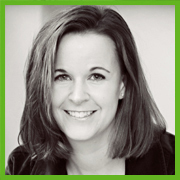 Christi McGuire has been in the Christian publishing industry for 15 years and has published hundreds of parenting articles and dozens of curriculum units. She also enjoys assisting aspiring writers through the writing, editing, and publishing process, from the beginnings of a manuscript to marketing their books via social media.
Christi McGuire has been in the Christian publishing industry for 15 years and has published hundreds of parenting articles and dozens of curriculum units. She also enjoys assisting aspiring writers through the writing, editing, and publishing process, from the beginnings of a manuscript to marketing their books via social media.
August 5, 2014
PUGS Pointers
And let’s not forget divine intervention. If God has given you a story to write, trust that He has called you at just the right time. He knows how long it takes to learn how to write for publication and how long it will take to develop your talent and hone your skills. He knows what it will take for you to network, make the right connections, and find the right publisher. And He knows exactly who He wants to reach with what He has called you to write.
I like to compare writing to singing. I love to sing, and my voice sounds delightful when I’m alone in my car with the radio blaring. But I wouldn’t dream of asking someone to pay to hear me sing! Not without having a professional singer critique my voice and taking some serious singing lessons.
If you expect someone to buy what you write, you need to take the time to learn how to do it right. Read books on writing. Take a course or two at your local college. Attend a workshop, seminar, or writers conference. Study style guides and market guides and books on grammar, punctuation, and spelling.
And most important, before you send a proposal out to a publishing house, hire a professional editor to check your work! (J)
Here are some of the most common problem areas I’ve encountered as I have critiqued and edited manuscripts.
FICTION
Adjectives. You need a bit of description so the reader can visualize a scene. But don’t describe every detail.
Adverbs. Replace verb phrases like “he walked slowly” with action verbs like “he crawled” or “he slithered” or “he strode.”
Attributions. Make sure your reader always knows who is speaking, even if simply by adding “Mary said.” The word said is nearly “invisible” when used sparingly, but alternatives should be used occasionally. Narrative description such as “He took a bite of apple pie” provide attribution, description, and a “beat” or pause. Longer narrative descriptions provide longer pauses in dialogue.
Beginnings. The first chapter of a novel needs to “hook” the reader, creating an intense desire to read on. The best way to start a story is to show a character with a problem doing something interesting. In the first few paragraphs, establish the immediate problem that faces your main character, and make it clear why he can’t solve his problem easily. What obstacles lie in his path? What conflicts are likely to arise that will keep your hero from achieving his goal?
Point of View. Don’t switch point of view without a specific purpose for doing so. When point-of-view switches are made, clearly indicate who the new POV character is and briefly describe the new setting. If time has elapsed, let the reader know when the new section takes place.
Profanity. Swear words are a lazy way to express emotions. Take the time to be more creative. Show your character’s anger rather than telling the reader he’s angry by giving him a foul word or two in dialogue. Many publishers today are shying away from excessive profanity because it turns off too many readers. If it important for a character to swear, find imaginative ways to let the reader know that in the narrative.
Scene vs. summary. Scenes are told in “real time.” Readers see events as they happen, rather than after the fact. Scenes have specific locations that are described in enough detail so the reader can picture them. They have physical action. And they usually include dialogue interspersed with narrative. Summary is used to cover spans of time and to provide an overall description of events that are less important than events described in “scenes.” Some plot developments are not important enough to justify scenes. If an event involves only minor characters, or repetitious actions, or small talk, summarize it. If you have a minor event that leads up to a key scene, summarize the first event so that the scene, when it comes, will seem more immediate by contrast.
Sentence/paragraph length. Don’t pack too much into a single sentence. This tends to produce run-ons or long, confusing structures the reader can’t follow. For fast-paced action scenes, use short sentences and paragraphs. For more leisurely, slow-moving scenes, use longer ones.
Show, don’t tell. This is the cardinal rule of fiction writing. Never tell the reader anything that can be more effectively explained by showing. This is particularly true of emotions. For example, if you write, “She was depressed,” that’s telling. If you say she ate an entire carton of cherry-cheesecake ice cream in one sitting, that’s showing. Or maybe she sits at the table, a double-fudge chocolate cake in front of her, and she can’t force herself to eat a single bite. Or if she’s really upset, maybe she picks up the cake (perhaps having just spent a great deal of time and care frosting it) and throws it into the trash. The point is, if you show a character doing something dramatic, you don’t have to tell the reader that character is depressed, or upset, or whatever the emotion might be. You have shown the emotion instead, which is much more powerful.
Transitions. Don’t give your readers what I call “literary whiplash” by jumping from one time, place, or point of view too often or too suddenly. Use transitions such as “A week later …” or “When they arrived …” Or insert a section break (indicated by a single, centered pound sign on an otherwise blank line).
Verbs. Wherever possible, strive to use strong, precise verbs rather than weak, vague verbs. Instead of saying, “They were going,” write, “They went.” Or better yet, show how they went. “They jogged,” “They raced,” “They ambled,” for example. The more description you can fit into a single action verb, the better.
NONFICTION
Introduction. Don’t spend too much time talking about yourself (your background, credentials, or personal experiences) or explaining why you wrote this book. Your reader will lose interest if you don’t get to the “real” information as soon as possible.
Explanation. Once you’ve told the reader why something is important, don’t forget to explain how to do it. Show the reader exactly how to solve whatever problem you’ve established.
Organization. Your material must be presented in a logical order. Don’t simply jot down ideas and information as they come to you. Even if your manuscript contains good information, it must be organized in such a way that it makes sense and flows well. Use subheads to break main topics into subtopics. Try making lists. Organize chronologically, in order of occurrence, or some other logical sequence. Then make sure that every paragraph or idea is placed where it best belongs.
Conclusion. Always provide a conclusion, even if it’s just a couple of sentences. One way to conclude is to briefly summarize what you’ve said. Another is to refer back to the beginning. If you opened with an anecdote or analogy, consider closing with a related anecdote or analogy. If you asked a question in the introduction, recap the answer in the conclusion. If you described a process that will benefit the reader, recap those benefits. Your ending should bring closure, wrap up loose ends, and help the reader make sense of what has gone before.
ALL WRITING
Active vs. Passive. Passive verbs often indicate that a subject exists, or that something happens to the subject. Active verbs describe something a subject does. EXAMPLES: “It is believed by Sue that a curfew must be placed on her son, Matthew” is passive. “Sue believes that she must place a curfew on her son, Matthew” is active.
Clichés, Slang, and Euphemisms. Avoid clichés like the plague. (Take the time to be more original.) Slang words can “date” your manuscript since trendy expressions become obsolete very quickly. Euphemisms (words or phrases used as substitutes for something the writer feels is too blunt or somehow offensive) can sometimes confuse readers.
Conciseness. All unnecessary words and phrases should be eliminated. Compress what you want to say into the fewest possible words. Don’t tell your readers what they already know, don’t need to know, or can figure out on their own.
Flowery writing. Don’t use big words when smaller ones will be more easily understood.
Mechanics. Nothing brands a new writer as an “amateur” more quickly than incorrect spelling, usage, punctuation, and grammar. Follow the link to “Proofreading Secrets of Best-Selling Authors” for some tips in these areas.
Proofread. Reread your work several times to catch typos. Ask a friend or family member to read, as a “second pair of eyes” can often catch things the author doesn’t.
Repetition. Obscure words should not be used more than once or twice in an entire book. Even regular words should not be repeated several times on one page. Vary sentence and structure beginnings.
Spell check. Never rely solely on your computer’s spell checker. If you are not absolutely certain of a word’s spelling, look it up. Check the usage and definition and part of speech to make sure the word you’ve written is really the word you intended.
Writing Tips
And let’s not forget divine intervention. If God has given you a story to write, trust that He has called you at just the right time. He knows how long it takes to learn how to write for publication and how long it will take to develop your talent and hone your skills. He knows what it will take for you to network, make the right connections, and find the right publisher. And He knows exactly who He wants to reach with what He has called you to write.
I like to compare writing to singing. I love to sing, and my voice sounds delightful when I’m alone in my car with the radio blaring. But I wouldn’t dream of asking someone to pay to hear me sing! Not without having a professional singer critique my voice and taking some serious singing lessons.
If you expect someone to buy what you write, you need to take the time to learn how to do it right. Read books on writing. Take a course or two at your local college. Attend a workshop, seminar, or writers conference. Study style guides and market guides and books on grammar, punctuation, and spelling.
And most important, before you send a proposal out to a publishing house, hire a professional editor to check your work! (J)
Here are some of the most common problem areas I’ve encountered as I have critiqued and edited manuscripts.
FICTION
Adjectives. You need a bit of description so the reader can visualize a scene. But don’t describe every detail.
Adverbs. Replace verb phrases like “he walked slowly” with action verbs like “he crawled” or “he slithered” or “he strode.”
Attributions. Make sure your reader always knows who is speaking, even if simply by adding “Mary said.” The word said is nearly “invisible” when used sparingly, but alternatives should be used occasionally. Narrative description such as “He took a bite of apple pie” provide attribution, description, and a “beat” or pause. Longer narrative descriptions provide longer pauses in dialogue.
Beginnings. The first chapter of a novel needs to “hook” the reader, creating an intense desire to read on. The best way to start a story is to show a character with a problem doing something interesting. In the first few paragraphs, establish the immediate problem that faces your main character, and make it clear why he can’t solve his problem easily. What obstacles lie in his path? What conflicts are likely to arise that will keep your hero from achieving his goal?
Point of View. Don’t switch point of view without a specific purpose for doing so. When point-of-view switches are made, clearly indicate who the new POV character is and briefly describe the new setting. If time has elapsed, let the reader know when the new section takes place.
Profanity. Swear words are a lazy way to express emotions. Take the time to be more creative. Show your character’s anger rather than telling the reader he’s angry by giving him a foul word or two in dialogue. Many publishers today are shying away from excessive profanity because it turns off too many readers. If it important for a character to swear, find imaginative ways to let the reader know that in the narrative.
Scene vs. summary. Scenes are told in “real time.” Readers see events as they happen, rather than after the fact. Scenes have specific locations that are described in enough detail so the reader can picture them. They have physical action. And they usually include dialogue interspersed with narrative. Summary is used to cover spans of time and to provide an overall description of events that are less important than events described in “scenes.” Some plot developments are not important enough to justify scenes. If an event involves only minor characters, or repetitious actions, or small talk, summarize it. If you have a minor event that leads up to a key scene, summarize the first event so that the scene, when it comes, will seem more immediate by contrast.
Sentence/paragraph length. Don’t pack too much into a single sentence. This tends to produce run-ons or long, confusing structures the reader can’t follow. For fast-paced action scenes, use short sentences and paragraphs. For more leisurely, slow-moving scenes, use longer ones.
Show, don’t tell. This is the cardinal rule of fiction writing. Never tell the reader anything that can be more effectively explained by showing. This is particularly true of emotions. For example, if you write, “She was depressed,” that’s telling. If you say she ate an entire carton of cherry-cheesecake ice cream in one sitting, that’s showing. Or maybe she sits at the table, a double-fudge chocolate cake in front of her, and she can’t force herself to eat a single bite. Or if she’s really upset, maybe she picks up the cake (perhaps having just spent a great deal of time and care frosting it) and throws it into the trash. The point is, if you show a character doing something dramatic, you don’t have to tell the reader that character is depressed, or upset, or whatever the emotion might be. You have shown the emotion instead, which is much more powerful.
Transitions. Don’t give your readers what I call “literary whiplash” by jumping from one time, place, or point of view too often or too suddenly. Use transitions such as “A week later …” or “When they arrived …” Or insert a section break (indicated by a single, centered pound sign on an otherwise blank line).
Verbs. Wherever possible, strive to use strong, precise verbs rather than weak, vague verbs. Instead of saying, “They were going,” write, “They went.” Or better yet, show how they went. “They jogged,” “They raced,” “They ambled,” for example. The more description you can fit into a single action verb, the better.
NONFICTION
Introduction. Don’t spend too much time talking about yourself (your background, credentials, or personal experiences) or explaining why you wrote this book. Your reader will lose interest if you don’t get to the “real” information as soon as possible.
Explanation. Once you’ve told the reader why something is important, don’t forget to explain how to do it. Show the reader exactly how to solve whatever problem you’ve established.
Organization. Your material must be presented in a logical order. Don’t simply jot down ideas and information as they come to you. Even if your manuscript contains good information, it must be organized in such a way that it makes sense and flows well. Use subheads to break main topics into subtopics. Try making lists. Organize chronologically, in order of occurrence, or some other logical sequence. Then make sure that every paragraph or idea is placed where it best belongs.
Conclusion. Always provide a conclusion, even if it’s just a couple of sentences. One way to conclude is to briefly summarize what you’ve said. Another is to refer back to the beginning. If you opened with an anecdote or analogy, consider closing with a related anecdote or analogy. If you asked a question in the introduction, recap the answer in the conclusion. If you described a process that will benefit the reader, recap those benefits. Your ending should bring closure, wrap up loose ends, and help the reader make sense of what has gone before.
ALL WRITING
Active vs. Passive. Passive verbs often indicate that a subject exists, or that something happens to the subject. Active verbs describe something a subject does. EXAMPLES: “It is believed by Sue that a curfew must be placed on her son, Matthew” is passive. “Sue believes that she must place a curfew on her son, Matthew” is active.
Clichés, Slang, and Euphemisms. Avoid clichés like the plague. (Take the time to be more original.) Slang words can “date” your manuscript since trendy expressions become obsolete very quickly. Euphemisms (words or phrases used as substitutes for something the writer feels is too blunt or somehow offensive) can sometimes confuse readers.
Conciseness. All unnecessary words and phrases should be eliminated. Compress what you want to say into the fewest possible words. Don’t tell your readers what they already know, don’t need to know, or can figure out on their own.
Flowery writing. Don’t use big words when smaller ones will be more easily understood.
Mechanics. Nothing brands a new writer as an “amateur” more quickly than incorrect spelling, usage, punctuation, and grammar. Follow the link to “Proofreading Secrets of Best-Selling Authors” for some tips in these areas.
Proofread. Reread your work several times to catch typos. Ask a friend or family member to read, as a “second pair of eyes” can often catch things the author doesn’t.
Repetition. Obscure words should not be used more than once or twice in an entire book. Even regular words should not be repeated several times on one page. Vary sentence and structure beginnings.
Spell check. Never rely solely on your computer’s spell checker. If you are not absolutely certain of a word’s spelling, look it up. Check the usage and definition and part of speech to make sure the word you’ve written is really the word you intended.
July 1, 2014
Cooperative Competition
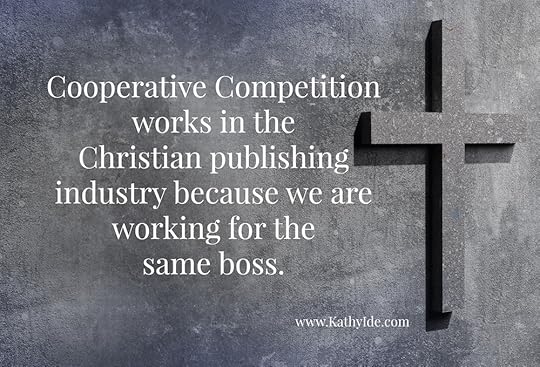


Sharon Norris Elliott was one of the special speakers at The Christian PEN convention in April. She presented a unique concept in the Christian publishing industry: cooperative competition. It was encouraging for the editors who attended “PENCON” and it will be for all others in the publishing industry as well.
Here are some of the highlights of her presentation.
What is “cooperative competition”? It is an oxymoron! Why should we cooperate with our competition? Why should we help out other editors and writers in the publishing industry when they could be stealing our jobs?
Because we all work for the same boss—God.
Exodus 18:5-23 gives an example of cooperative competition between Jethro and Moses. From those verses, we can draw four concepts of cooperative competition.
1. Mingle
Fellowship with others.
Go to conferences.
Share the good and the bad with others.
Bless God together.
Worship God together.
Rejoice over others’ success.
2. Maintenance
Know your gifts and stay in your lane.
Perfect your craft.
Be willing to share your knowledge and gifts with others.
Produce your fruit for somebody else.
3. Mentoring
Eliminate the loner mentality.
Learn and listen with the right attitude.
Never go about anything alone.
Be open to be mentored and to be a mentor.
4. Mentality
Eliminate the loner mentality.
Pass along what you’ve learned.
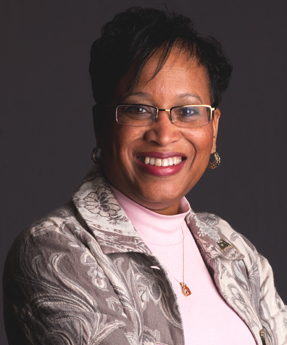 Sharon Norris Elliott is founder and CEO of Life That Matters Ministries, director of Sandy Cove Christian Communicators’ Experience, Christian educator, conference speaker, composer, editor, and published author. Sharon ministers to women’s and teens’ groups, singles’ gatherings, corporate workshops, conferences, and special church services. Visit her website at http://lifethatmatters.net.
Sharon Norris Elliott is founder and CEO of Life That Matters Ministries, director of Sandy Cove Christian Communicators’ Experience, Christian educator, conference speaker, composer, editor, and published author. Sharon ministers to women’s and teens’ groups, singles’ gatherings, corporate workshops, conferences, and special church services. Visit her website at http://lifethatmatters.net.
June 23, 2014
Ghostwriting: Guest Blog by Cecil Murphey
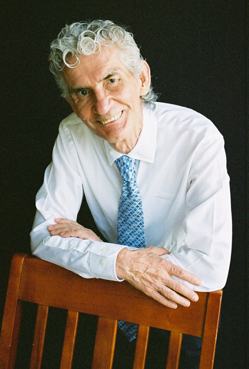

Cecil Murphey was one of the special speakers at The Christian PEN convention in April. He has written or cowritten more than 135 books. I am blessed to call him a dear friend. His workshop on ghostwriting was informative and helpful for the editors who attended “PENCON.”
Here are some of the highlights of his presentation.
Tips on Being a Ghostwriter
1. Have empathy.
A ghostwriter has to identify with people and have empathy for them. It is their perspective that matters—not yours. Tell them often, “This is your book. My job is to help you tell your story more effectively.”
2. Listen.
Ghostwriters need to listen without judgment and hear what is unspoken. What is the author not saying? Do the facts of the story add up? Investigate the details that are left out. Connect the dots of what is spoken and what is not spoken.
3. Record everything.
Taking a recording device to the interviews frees you to listen and fully focus on the person. Afterward, have the recording transcribed.
4. Know your objective.
Learning information is a “cool” objective. Learn about people’s hearts is a “warm” objective. A ghostwriter needs both.
5. Research.
The person you are writing about may not remember all the details of his or her own story. Research the facts.
There are a few cons to being a ghostwriter:
Your name is not well known. (Usually your name is not listed on the book cover.)
You don’t get the publicity.
Some people are very demanding and difficult to work with.
You may not have editorial rights.
Your talent may go unrecognized.
Your sense of ownership gets removed.
If you are interested in ghostwriting, here are a few ways to get started.
Write a profile or testimony to see if you can tell someone else’s story effectively.
Ask yourself if you can work with someone you don’t agree with or someone whose morals and integrity don’t match yours.
Join organizations, such as The Christian PEN and attend writer’s conferences.
Let people know you are available to ghostwrite.
Decide which areas of ghostwriting you want to do: autobiographies, celebrities, the “underdog,” etc.
Pass on work that you know you can’t do well.
 Veteran author Cecil (“Cec”) Murphey has written or cowritten more than 135 books, including the New York Times best seller 90 Minutes in Heaven (with Don Piper) and Gifted Hands: The Ben Carson Story (with Dr. Ben Carson). His books have sold in the millions and have brought hope and encouragement to countless people around the world.
Veteran author Cecil (“Cec”) Murphey has written or cowritten more than 135 books, including the New York Times best seller 90 Minutes in Heaven (with Don Piper) and Gifted Hands: The Ben Carson Story (with Dr. Ben Carson). His books have sold in the millions and have brought hope and encouragement to countless people around the world.
Cec stays busy as a professional writer and travels extensively to speak on topics such as writing, spiritual growth, caregiving, significant living, sexual abuse, and recovery.
Prior to launching his career as a full-time writer and speaker, Cec served as pastor in metropolitan Atlanta, as a volunteer hospital chaplain for ten years, and as a missionary in Kenya for six years.
Visit his website at www.cecilmurphey.com
June 16, 2014
Set Yourself Apart as an Editor
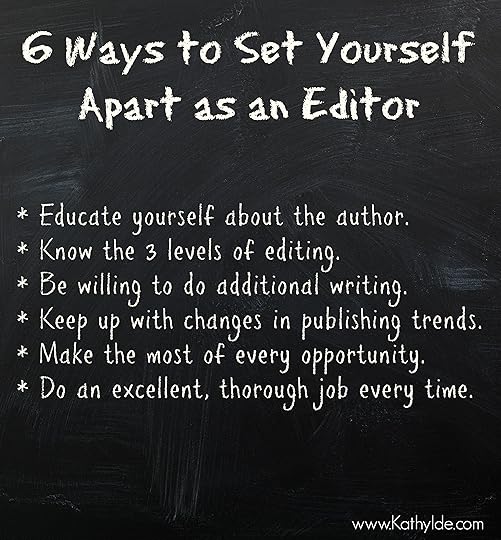

Kim Bangs, senior acquisitions editor for the Bethany House and Chosen divisions of Baker Publishing Group, was a workshop leader at The Christian PEN’s editor convention, “Keys to Successful Freelance Editing.” Her talk about how to “Set Yourself Apart as an Editor” was informative and motivating. Here is a summary of the helpful tips she shared on how to become an editor for a publishing house.
The publishing industry is always changing. It used to be that the publisher was in charge. Now the author is in the driver’s seat. It is becoming more about “partnership.”
As an editor, you can set yourself apart with these two tips.
1. Prepare to step in
Take small jobs to grow your experience.
Produce quality work all the time—no matter how small the job is.
Continually develop your skill level.
2. Realize that freelance editors are like …
Midwives—They deliver great, excellent products.
Photographers—They need to learn Photoshop to enhance a product.
Mentors and teachers—They mentor writers and teach throughout the publishing process.
Dentists—They know when a general cleaning or root canal is required.
You can also set yourself apart as an editor in the following ways:
Ask about the author’s style guide.
Visit the author’s website to learn more about him/her.
Ask about any issues on an author’s previous book(s).
If you have worked with an author before, ask if he/she was happy with your work.
Be careful to maintain the author’s voice.
Suggest call-outs.
Put takeaway points at the end of the chapters.
Pull out text from the manuscript for Facebook and Twitter posts. Help make the author marketable.
Provide an annotated Table of Contents.
Write cover copy.
See yourself as a partner with the author and the publishing house.
Keep in mind that one person the book is for.
Don’t undersell yourself, because a low price implies you have low-quality work.
Don’t just do work—find partnerships.
Have a “WE” mentality.
Tips to being a great EDITOR:
Educate = Educate yourself about the author.
Dentist = Know the three levels of editing.
Impress = Impress the in-house team with your willingness to do additional writing (such as back-cover copy).
Trends = Keep up with changes in publishing.
Opportunities = Make the most of every job.
Reputation = Do excellent, thorough work every time.
And most of all—focus on providing excellent, biblically correct, life-changing content.
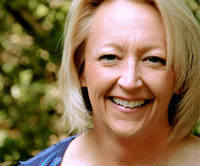 Kim Bangs has served in the Christian publishing industry for twenty-four years. Beginning as an editor in the Children’s Curriculum Department at Gospel Light, she also worked as the Publishing Director for Regal (the book division of Gospel Light). She has currently been appointed as the senior acquisitions editor for the Bethany House and Chosen divisions of Baker Publishing Group. In 2012 Kim was honored by AWSA as Non-Fiction Editor of the Year. She can be found at several writers’ conferences, doing all she can to inspire and encourage writers to write their passion and keep pressing on. She enjoys baking, gardening, Disneyland, and sports…but loves Jesus and His church.
Kim Bangs has served in the Christian publishing industry for twenty-four years. Beginning as an editor in the Children’s Curriculum Department at Gospel Light, she also worked as the Publishing Director for Regal (the book division of Gospel Light). She has currently been appointed as the senior acquisitions editor for the Bethany House and Chosen divisions of Baker Publishing Group. In 2012 Kim was honored by AWSA as Non-Fiction Editor of the Year. She can be found at several writers’ conferences, doing all she can to inspire and encourage writers to write their passion and keep pressing on. She enjoys baking, gardening, Disneyland, and sports…but loves Jesus and His church.
June 9, 2014
Photo Recap of The PEN Convention


In celebration of its 10th anniversary, The Christian PEN hosted its first annual Editor Convention, “Keys to Successful Freelance Editing,” in April 2014. For the next few weeks, I want to share some of the information from the workshops. But first, let’s look at some of the photos from the event to recap the fun fellowship the editors had.
Before the convention began, some of the editors went sightseeing and enjoyed the beauty of the Pacific Ocean at Corona del Mar beach.

I kicked off the convention with a workshop on proofreading.
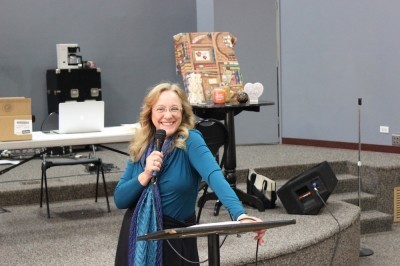
Cecil Murphey blessed us with two workshops, on ghostwriting and time management.
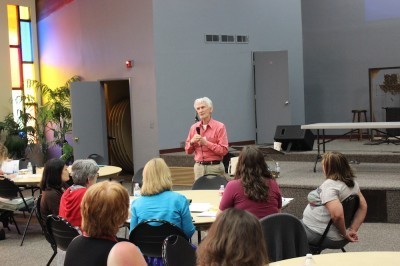
Kathy Bruins performed a touching drama in honor of Cecil Murphey.
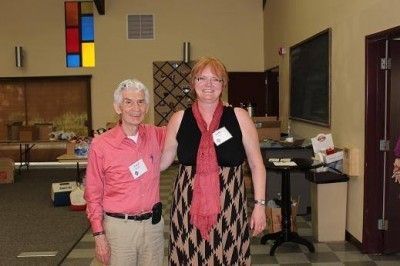
Sharon Elliott (far left) helped editors understand cooperative competition within the Christian publishing industry.
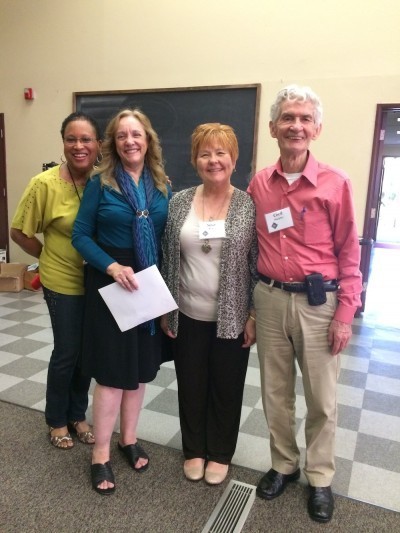
Christi McGuire gave an overview of social media for editors.
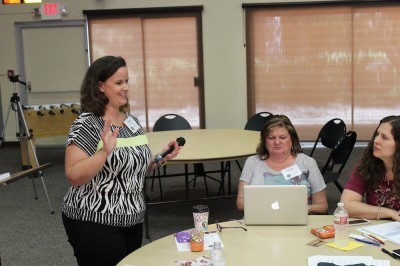
Kim Bangs taught on how to become the first-choice editor for a publishing house.
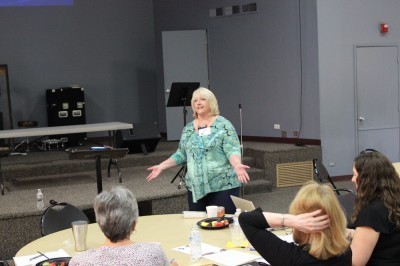
And of course no celebration would be complete without cake!

The attendees of the first annual PEN convention pose for a final picture.
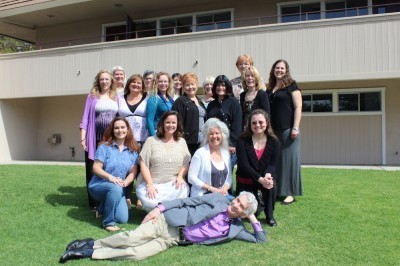
Stay tuned for posts on all the workshops. Downloads of the sessions are coming soon.




